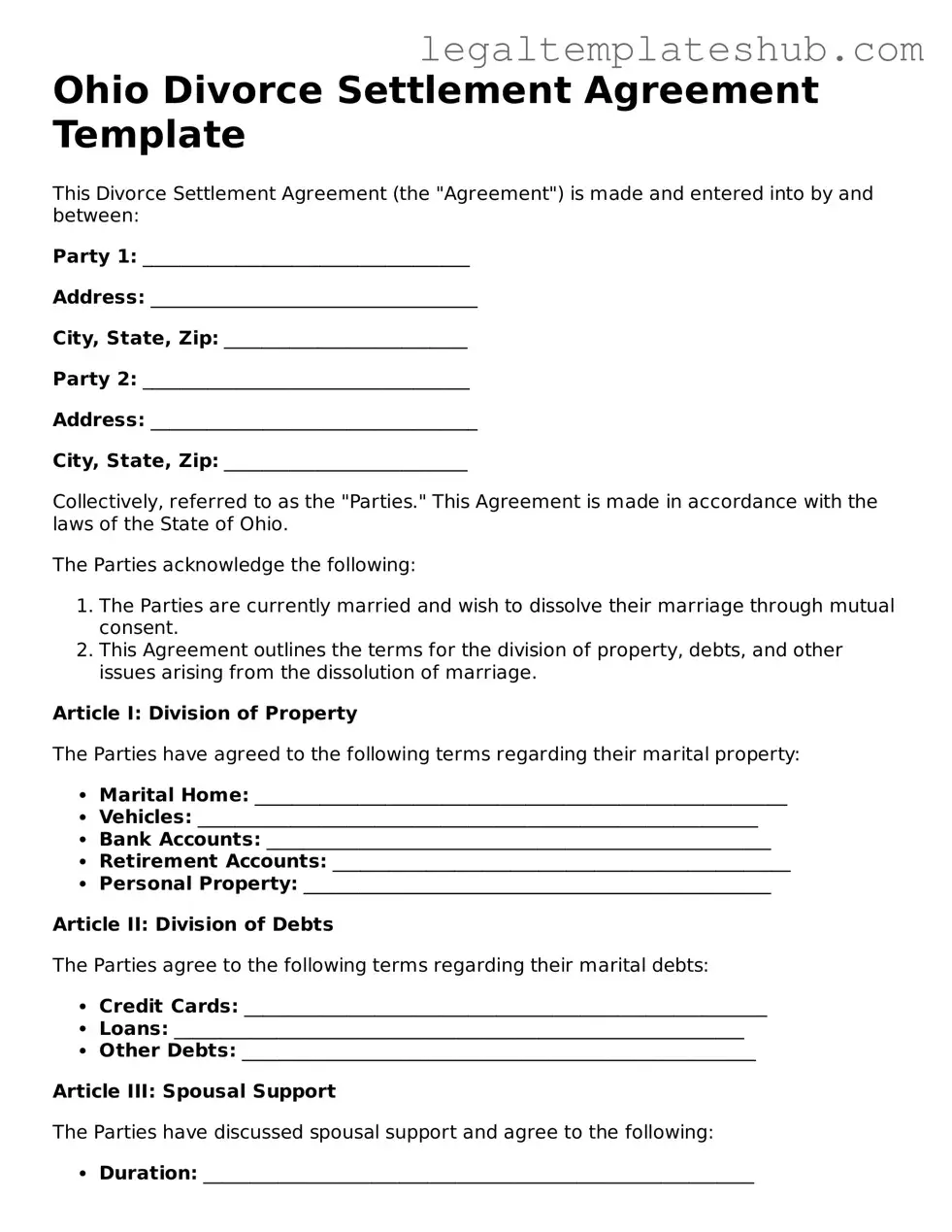Printable Divorce Settlement Agreement Document for Ohio
The Ohio Divorce Settlement Agreement form is a crucial document that outlines the terms and conditions agreed upon by both parties during a divorce. This form addresses various aspects such as asset division, child custody, and support obligations, ensuring that both individuals have a clear understanding of their responsibilities moving forward. By completing this form, couples can facilitate a smoother transition into their new lives.
Ready to get started? Fill out the form by clicking the button below!
Access Editor
